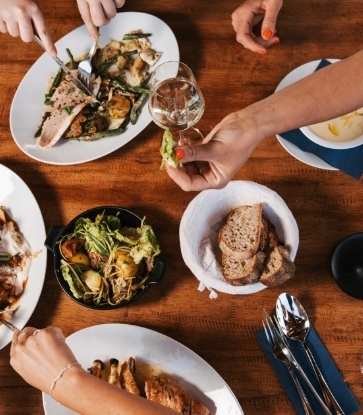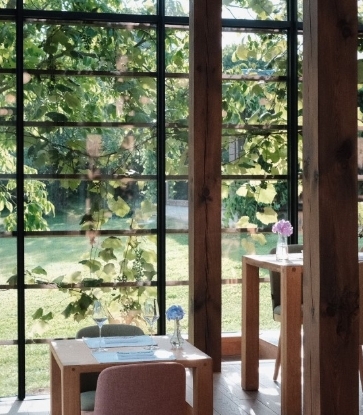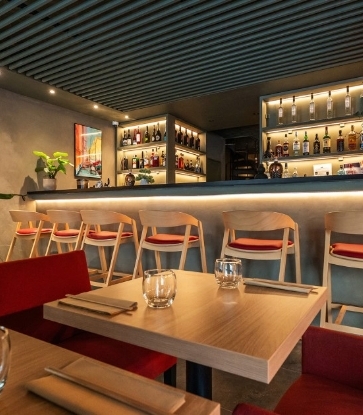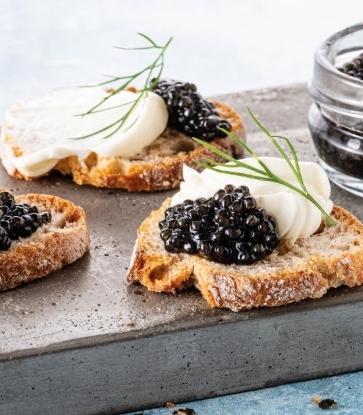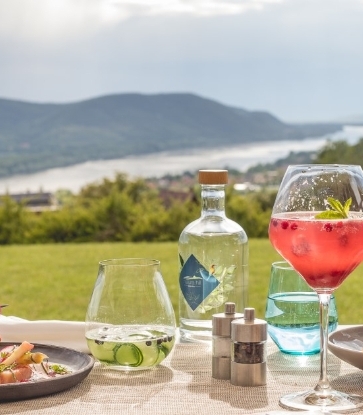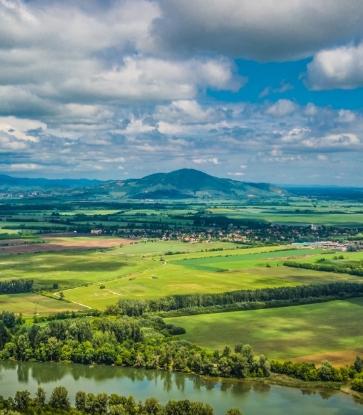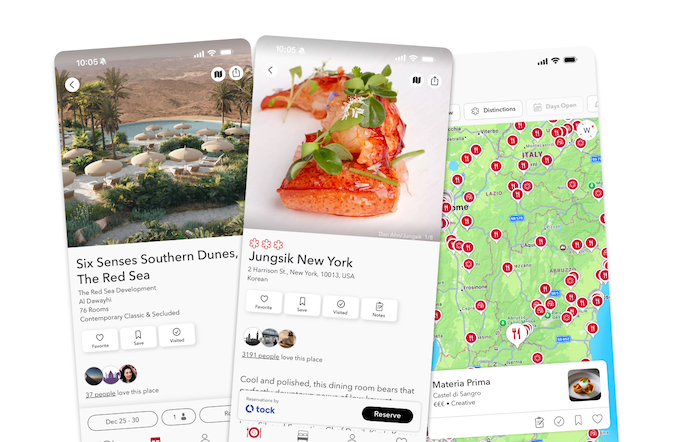Offering a seaside retreat in a landlocked country, the shimmering Lake Balaton is perhaps Hungary’s most beloved summer holiday destination. Central Europe’s largest lake is fringed by gorgeous volcanic scenery, golden sand beaches, abundant vineyards and charming towns, including the popular resort of Balatonfüred. And just a 10-minute drive (or half-hour cycle) from Balatonfüred lies one of the lake’s many hidden gems, the Tihany Peninsula. With its rolling lavender fields, legendary echo and volcanic lakes, the peninsula is well worth a weekend of your time. Here’s how to explore it in 48 hours.
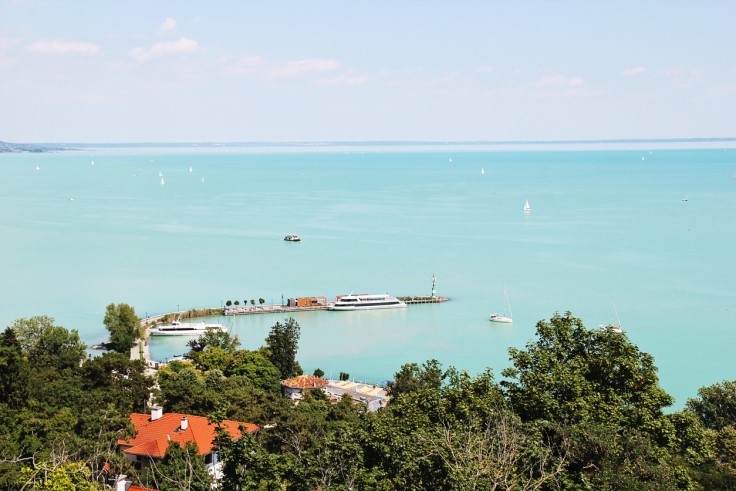
Day 1: Explore Tihany’s Legacy
Lavender
Tihany has been renowned for its lavender ever since the 1920s, when herbalist and chemical engineer Gyula Bittera chose the peninsula as the spot for Hungary’s first plantation of the purple shrub. The area’s volcanic soil and Mediterranean-like microclimate proved the perfect growing conditions, and Tihany lavender exploded in popularity. While production dipped in the 1960s, the new millennium saw renewed appetite for the aromatic plant, with chefs, wineries and artisans starting to incorporate it into their work.Now, every June, lavender lovers gather on the purple banks of Lake Balaton for the Tihany Lavender Festival. If your visit coincides with the event, you can pick your own lavender, browse artisan markets for oils and soaps, and attend tours and workshops. If not, there are still plenty of ways to indulge your senses in Tihany’s lavender legacy.
Kick off your first morning with a trip to the village’s lavender fields – or Levendulamező. Stroll through the dreamy fields (the photo opportunities are unrivalled) before visiting the Lavender House, where you can learn more about the peninsula’s history and people – from the days when raging volcanoes ruled the land to its modern role as a hotbed of lavender production.
In Tihany, lavender isn’t just a soothing scent – it’s used to give food and drink an exciting local flavour. After a guided tour of the Tihany lavender distillery, purchase gastronomic lavender products as diverse as fruit tea, coffee, elderflower syrup, oat biscuits, acacia honey, apricot jam and chocolate bars.
For a lavender dish whipped up by an expert, look to Tihanyi Vinarius, a local restaurant that showcases the herb on its dessert menu. Head Chef Dávid Horváth says: “Lavender is a symbol of Tihany, so it was natural for us to include it on our menu. It shines most elegantly in desserts: in the ‘Vinarius 200’ cake slice and in the lavender truffles of our petit four selection, where it harmonises beautifully with white chocolate and raspberries.”
The restaurant also features a selection of beverages flavoured by lavender harvested from the Apátsági Majorság. Sip on refreshing lavender-based lemonades and cocktails, or sample the Vinarius Rosé Spritz – a delight in the summer months.
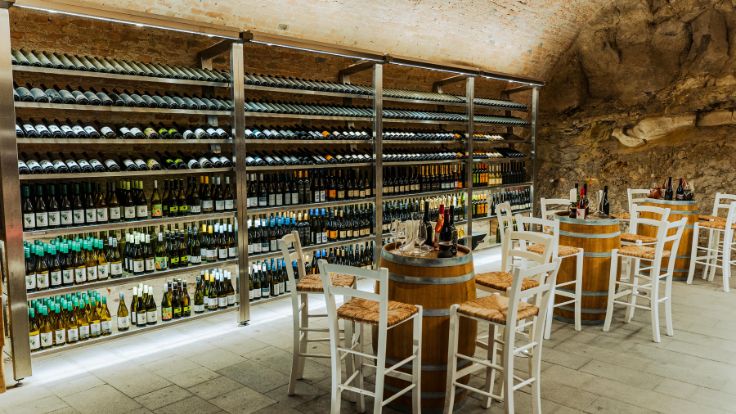
Lunch Specials
Once you’ve had your fill of Tihany’s lavender-infused specialities, why not try some of the area’s other delicacies?
Be sure to look out for halászlé (a traditional Hungarian fisherman’s soup). This hearty, spicy dish is prepared with lashings of paprika and carp or mixed river fish. Prefer an al fresco snack? Stalls near Lake Balaton dish up delicious fried lake fish – often bream or pike-perch – which is lightly seasoned, coated in flour and paprika, pan-fried and served with a side of white bread.
It's natural, of course, to pair your lunch with a local wine. Tihany lies within the Balatonfüred-Csopak wine district, part of the vast Balaton wine region. Despite its diminutive size (approximately 5.6 km²), the peninsula is known for producing wine from key grape varieties like Kékfrankos (Blaufränkisch) and Zweigelt. Popular Tihany wines include the St Donat 'Tufa' Red Blend (a spicy red that incorporates Bing cherries, raspberry coulis and black pepper); the dry, crisp Zelna Tihany Rosé; and the ruby Homola Kékfrankos, packed with red berries.
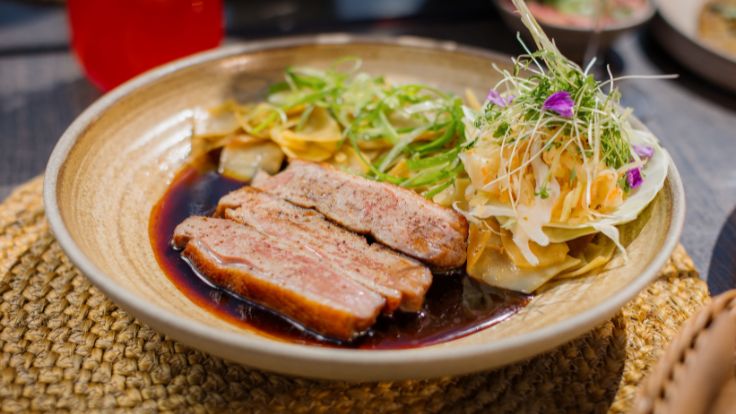
The Benedictine Abbey
If you can tear yourself away from the dreamy lavender fields, there’s plenty more to see on the Tihany peninsula. The Tihany Abbey is a Benedictine Monastery that was established on the shore of Lake Balaton all the way back in 1055, although the current building was constructed in 1754. Its twin spires and terracotta rooftop dominate the village’s skyline.
Inside, discover a series of 18th -century baroque-rococo treasures, as well as a crypt containing the remains of King Andrew I, who ruled Hungary from 1046 until his death in 1060. Outside, you can enjoy spectacular views of the lake.
Next door, the Abbey Museum is home to exhibits centred around Lake Balaton, King Andrew and a handful of religious artefacts, while the gift shop stocks a selection of beers brewed at the abbey. From here, you don’t have to walk far to reach Skansen Tihany – an open-air ethnographic museum showcasing rural Hungarian life. This cluster of thatched peasant houses gives you a glimpse into living on the peninsula in the 18th and 19th centuries.
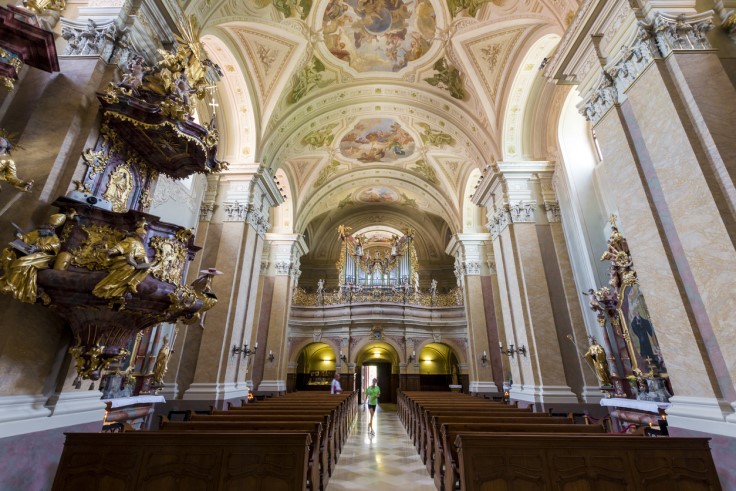
Dinner at Tihanyi Vinarius
A strong choice for any meal, the elegant Tihanyi Vinarius comprises a charming, thatched restaurant – complete with an open kitchen – dating back to 1822, a 200-year-old Bond-esque cellar complete with a wine vault, and an open terrace with a murmuring fountain and panoramic views of the Belső-tó (Inner Lake).
The restaurant’s approach revolves around three key values: protecting the environment, respect for local traditions, and a contemporary culinary approach built on local ingredients.
Head Chef Dávid Horváth explains that the Hungarian menu is guided by the guest experience. “The philosophy of our kitchen is simple yet refined: while honouring tradition, we craft dishes that are accessible to all yet offer a sense of excitement. It begins with sourcing fresh, seasonal ingredients, most of which are carefully selected from local and regional producers and artisans.”
This approach has inspired a menu packed with classic Hungarian flavours – from hearty bone-in meat broth to rich, slow-simmered Esterházy beef – alongside special creations like the “Green Gold Pancake” with pumpkin seeds, raspberries and white chocolate. The “bold and beloved” Rosé Duck comes highly recommended by the restaurant’s team. The meat is subtly seasoned with Chinese five-spice, accompanied by traditional Hungarian csusza egg pasta, and lightly fried in duck and chicken fat.
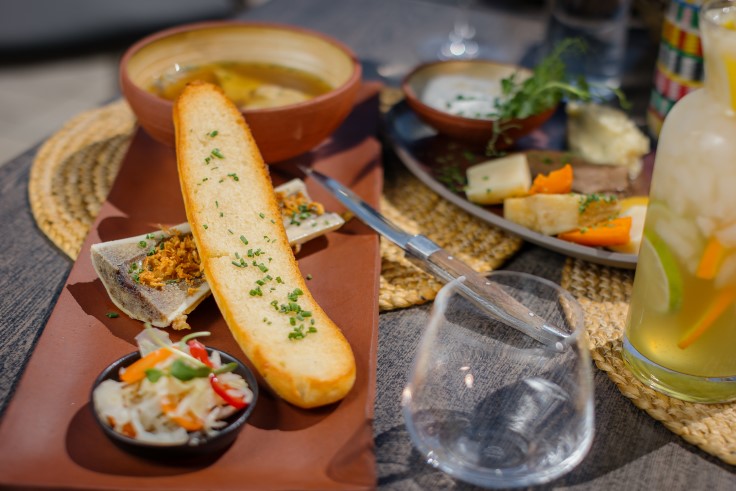
Environmental considerations are at the heart of the Tihanyi Vinarius offering. The kitchen strives to use every part of the animal, as well as fruits and vegetables, to minimise waste while maximising the value of each ingredient. CEO Tamás Vadász explains that the restaurant team maintains personal relationships with local producers to ensure fresh, seasonal products. “In doing so, we not only support small regional farms, but also reduce the ecological footprint of transportation.”
In the grounds of Tihanyi Vinarius, the restaurant team cultivates its own small herb garden. Here they grow the spinach used for the kitchen’s trout dishes, as well as watercress, savory, dill and various types of basil. The garden’s fresh mint is an essential addition to the restaurant’s summertime lemonades, and its colourful florals – including honeyflowers, pansies, marigolds, roses and, of course, lavender – are plated up as decorative flavour accents.
The locality is central to the restaurant’s wine selection, too. The lengthy wine list features several Tihany bottles, as well as wines from other industrious Hungarian regions – including Tokaj, known for its furmint and hárslevelű grapes, and Somló, which produces mineral-rich whites. “We collaborate with wineries where both viticulture and winemaking follow environmentally responsible practices,” Tamás says. “This year, our wine list features organic wines as well as Tihany Abbey’s own wine.”
Restaurant Manager Szabolcs Herdi sums up the Tihanyi Vinarius experience: “Guests can not only taste but also witness the creation of each dish, accompanied by Balaton wines, refreshing lemonades or carefully prepared coffees,” he says. “Calm, attentive service combined with the cellar’s historic ambience bridges past and present in every moment. After a meal at Vinarius, the serene views of the Belső-tó complete the experience, offering a sense of peace and connection with the surrounding landscape.”
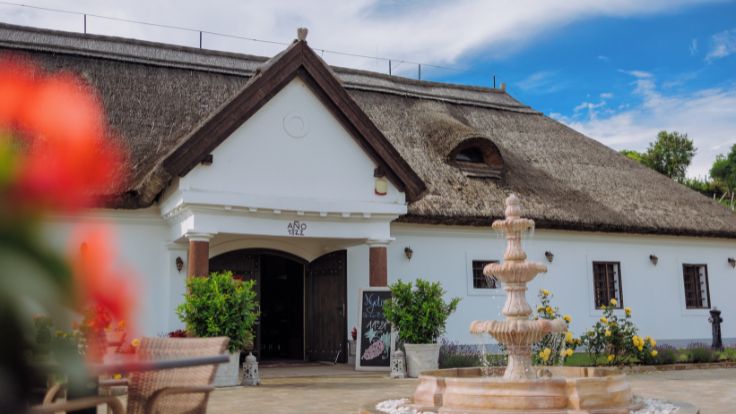
Day 2: Discover Natural Wonders
On your second day on the Tihany Peninsula, dive into the area’s natural wonders, from its volcanic craters, ancient geysers and thriving wildlife to the shimmering waters of Lake Balaton. Tihany boasts an otherworldly volcanic landscape, shaped by geological activity dating back millions of years. Visitors can hike or cycle in the surrounding landscape, before taking to the water on a boat trip.
Volcanic Lakes
When volcanic activity on Tihany ceased millions of years ago, it left behind two crater lakes: the Inner Lake, Belső-tó, and the Outer Lake, Külső-tó. These have an almost mystical feel, worlds away from the bright waters of Lake Balaton.The enchanting Belső-tó, just a few minutes’ walk from Tihany Benedictine Abbey, is a popular angling spot and a haven for wildlife. Strolling around the tranquil lake, you can see the Abbey’s lavender fields, grazing calves and playful foals, as well as peaceful grey cattle. Look out for curious ground squirrels as you walk.
Just a 10-minute walk from Belső-tó’s south shore, discover a three-million-year-old geyser field – follow signs for the geyser cone Aranyház (meaning “golden house”).
Meanwhile, keen birdwatchers should head straight for the reed-covered Külső-tó, where there are species as diverse as the ferruginous duck, the purple heron and the long-legged buzzard.
For an incredible 360-degree view of the peninsula, hike to Apáti Hill – a short distance from the Outer Lake – where you’ll find the Őrtorony lookout tower.
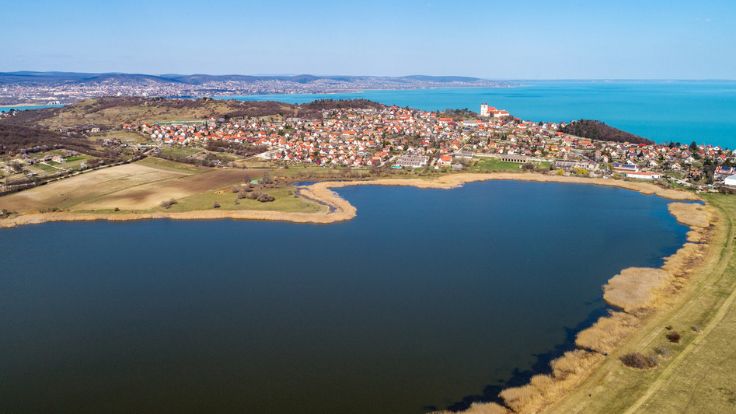
The Echo of Visszhang-hegy
One of the peninsula’s most enduring tales surrounds the ‘Echo of Tihany’. The legend tells of a princess who once spurned a prince’s proposal. When the prince died of heartbreak, his father, the king, turned the princess into stone.
Unable to speak to ask for help, she was cursed to repeat the words of any who spoke to her. Located at the end of Pisky sétány, Visszhang-hegy is home to a statue of the legendary princess. Shout anything in the direction of the Abbey Church, and you should hear the echo. In its heyday the echo used to be a lot stronger – returning around 15 syllables. Over time the effect has grown weaker, but with a little imagination you can still hear the petrified princess echoing your call.
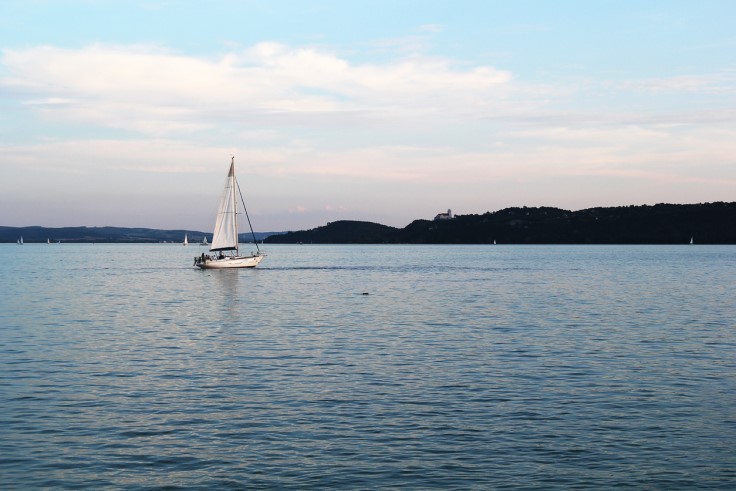
Boating on Lake Balaton
See what all the fuss is about by embarking on a boat trip on Lake Balaton’s glimmering waters. If you’re short on time, choose a 10-minute ferry that takes you from Tihany, on the north bank of the lake, to Szántód on the south. Or enjoy a more leisurely cruise, with options ranging from one hour on the water to full day trips. There are plenty of sailing
experiences for keen deckhands too.
Looking for something special? The team at Tihanyi Vinarius also offer guests a unique experience by taking guests out on their private yacht and serving light bites and beverages before stopping off for a refreshing dip at Sajkodi Bay.
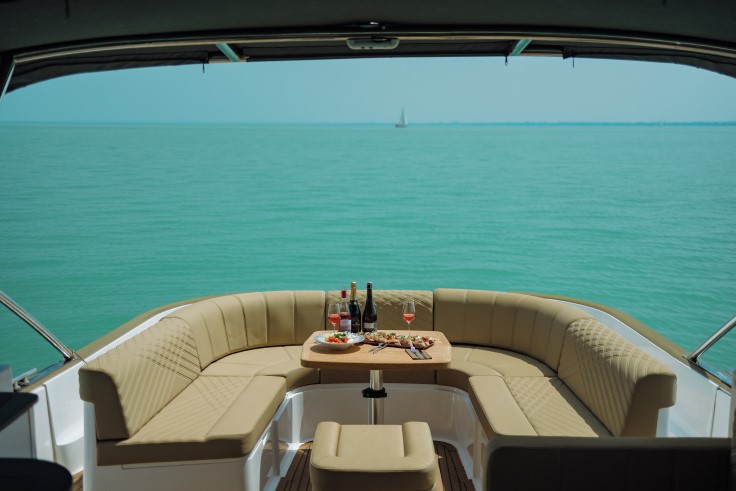
Balatonfüred: Where to Stay
The lakeside spa town of Balatonfüred – two hours’ drive from Budapest, and just 10 minutes from Tihany – is home to two MICHELIN-recommended hotels. For a luxurious experience (complete with a vast spa) that thoroughly celebrates the region’s wine heritage, choose the Hotel Vinifera Wine & Spa. Alternatively, the Hotel Petit Bois is an elegant adults- only option with a rooftop bar, restaurant and pool.
There are a handful of outstanding restaurants close to these hotels too, including the stylish NOON, which showcases local wines, the Bib Gourmand awarded all-day bistro Sparhelt and Zelna Borbisztró – a modern wine bar serving light bites and hearty dishes.
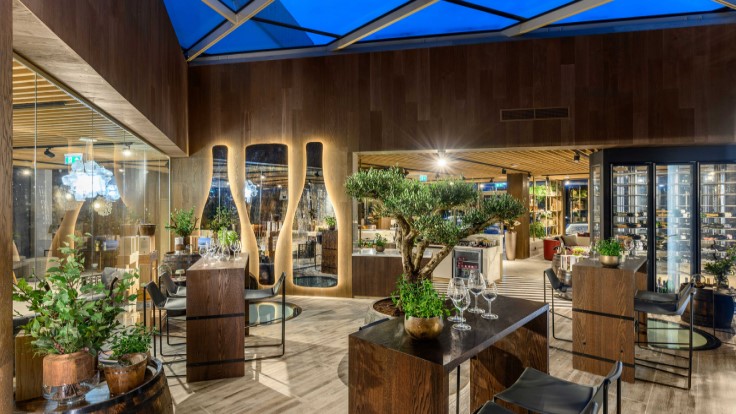
Hero Image: The famous lavender fields of Tihany, Hungary (© Remedios/iStock)




